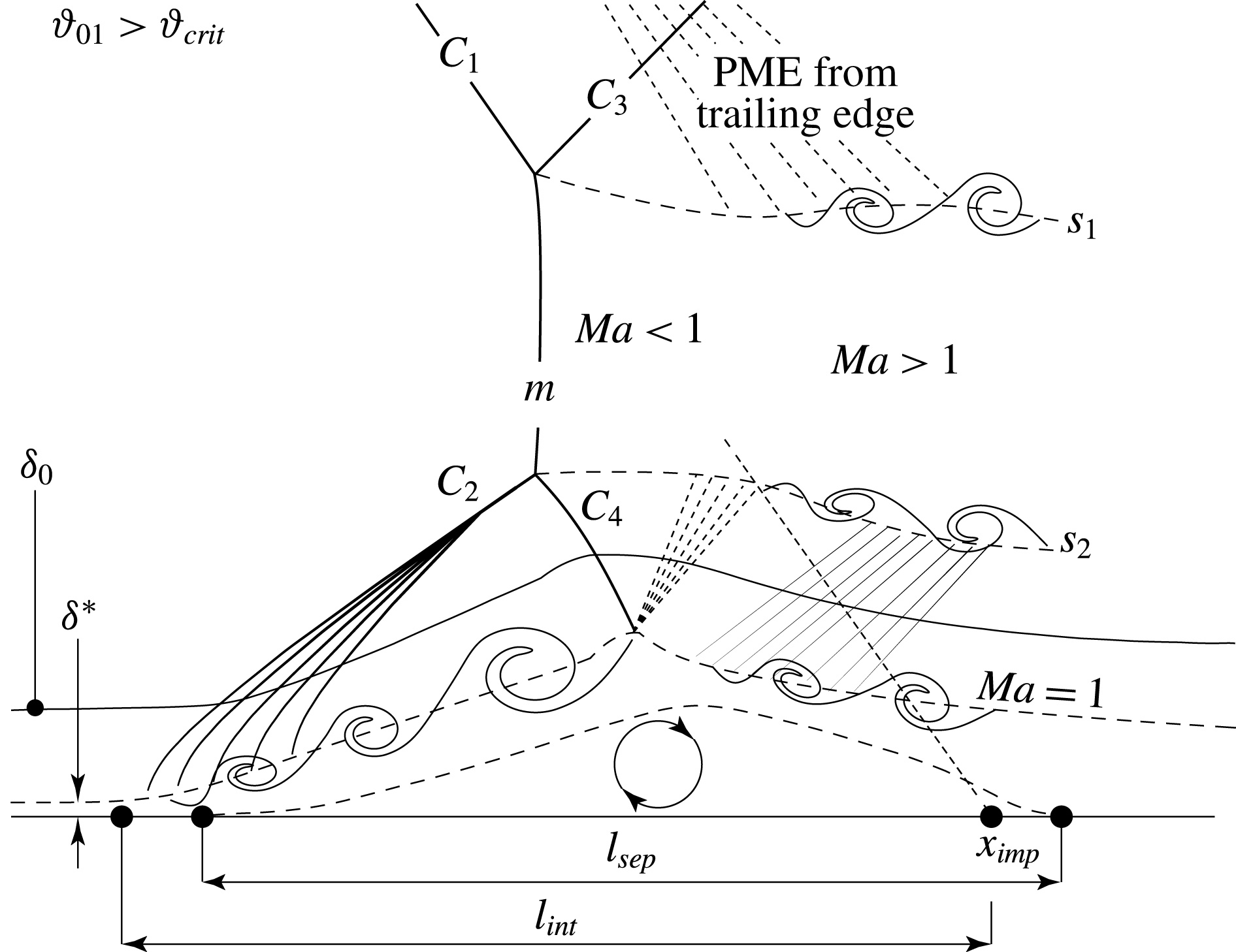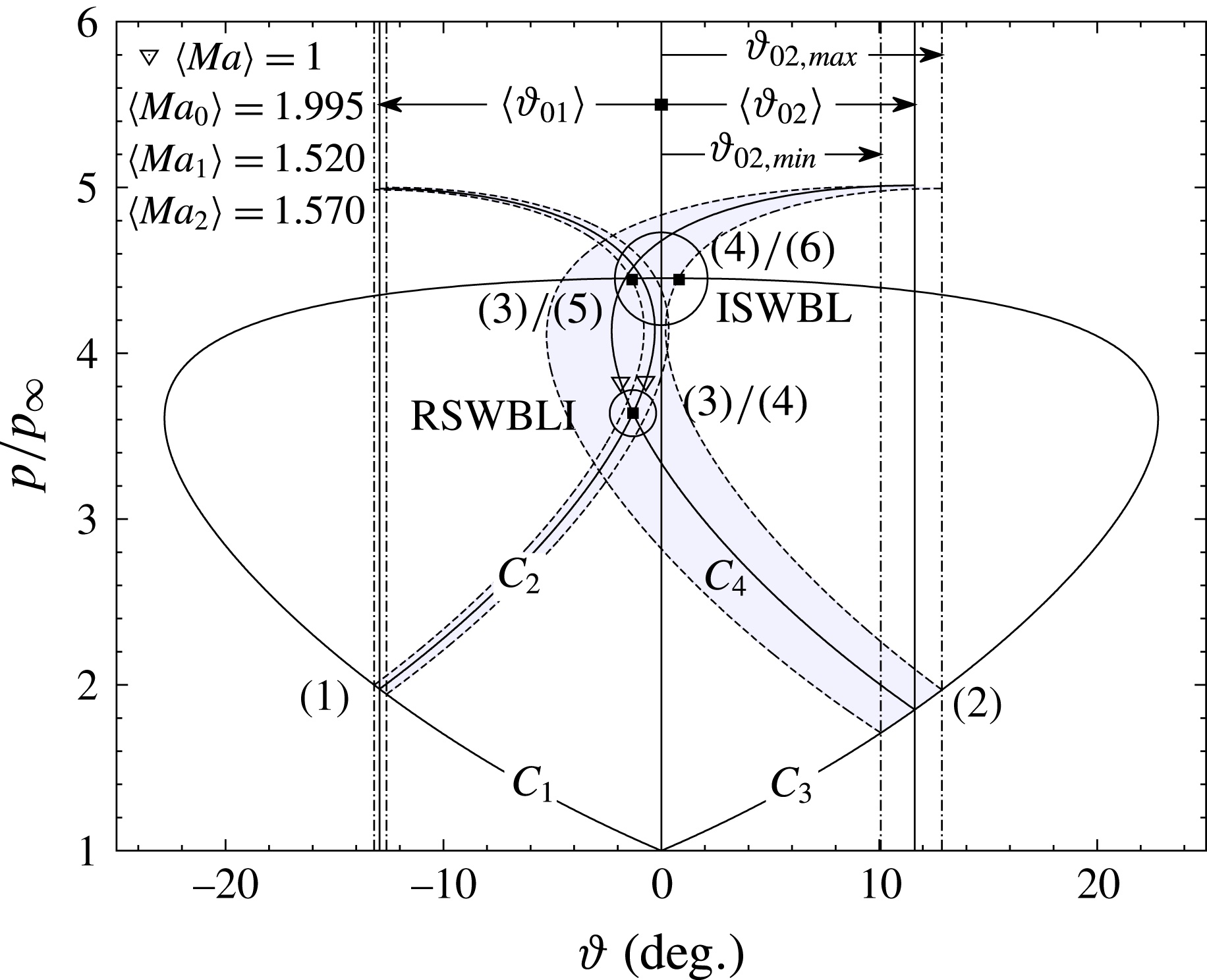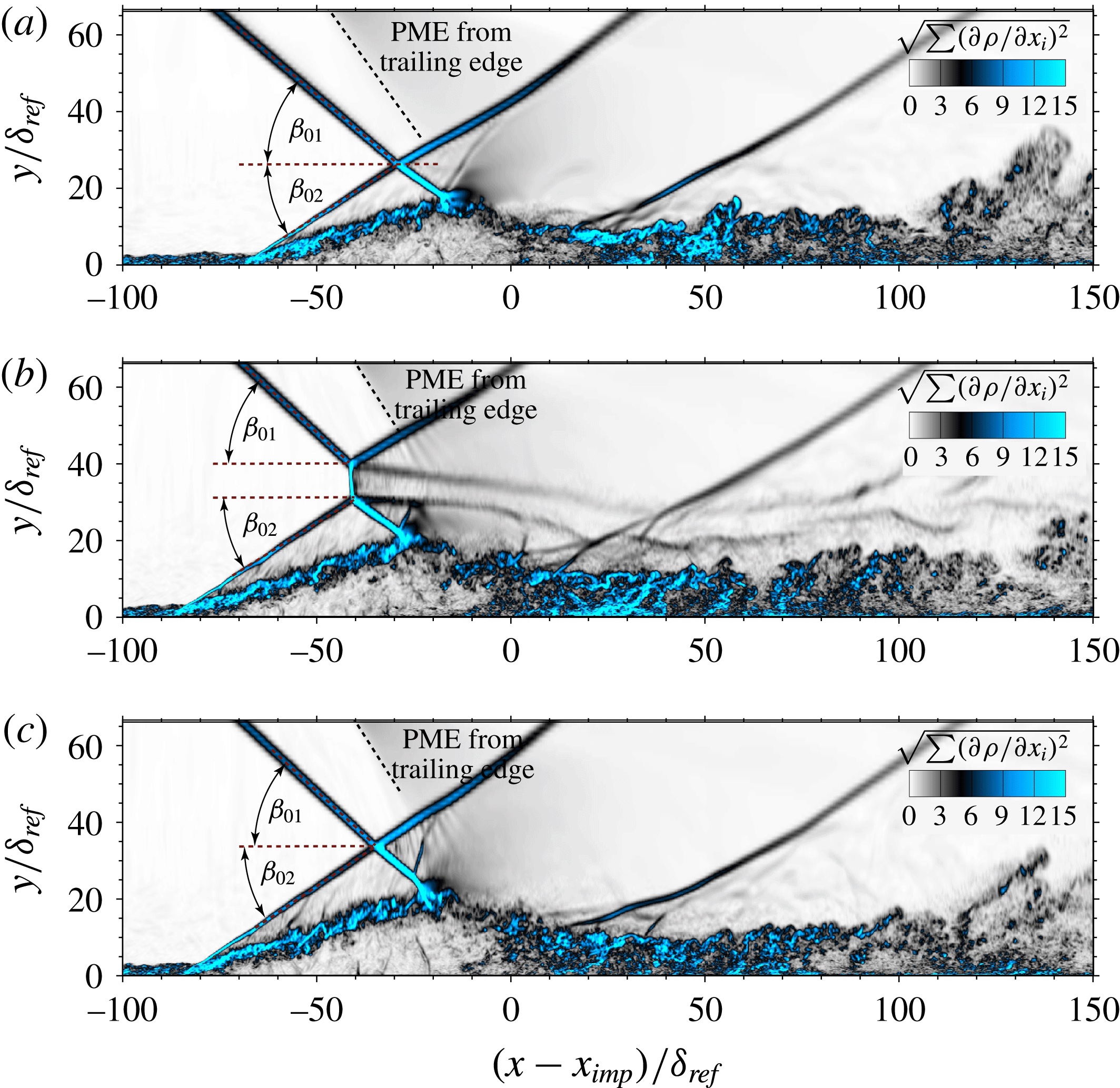J. Matheis, S. Hickel (2015)
Journal of Fluid Mechanics 776: 200-234. doi: 10.1017/jfm.2015.319
The reflection of strong oblique shock waves at turbulent boundary layers is studied numerically and analytically. A particular emphasis is put on the transition between regular shock-wave/boundary-layer interaction (SWBLI) and Mach reflection (irregular SWBLI). The classical two- and three-shock theory and a generalised form of the free interaction theory are used for the analysis of well-resolved large-eddy simulations (LES) and for the derivation of stability criteria.
We found that at a critical deflection angle across the incident shock wave, the perturbations related to the turbulent boundary layer cause bi-directional transition processes between regular and irregular shock patterns for a free-stream Mach number of Ma = 2 . Computational results show that the mean deflection angle across the separation shock is decoupled from the incident shock wave and can be accurately modelled by the generalised free interaction theory. On the basis of these observations, and the von Neumann and detachment criteria for the asymmetric intersection of shock waves, we derive the critical incident shock deflection angles at which the shock pattern may/must become irregular. Numerical data for a free-stream Mach number of Ma = 3 confirm the existence of the dual-solution domain predicted by theory.



